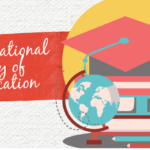COVID-19 and Gender
Like almost everything, the current coronavirus pandemic has a gender angle. Why? Because the gender roles that each of us play – the socially defined set of roles, rights, responsibilities, entitlements, and obligations of females and males – impact and are impacted by this crisis.
While it seems that men are more likely to die of this and other viruses because of genetics and chromosomes. But men may also be more susceptible because of gender norms that cause greater stress, higher rates of tobacco consumption and a reluctance to seek medical care. When we look back, research will give us a better picture of the outcomes for all of those affected and how it was divided by sex, gender, age and race.
At the same time, women are also bearing the brunt of much of the crisis. An April 3 U.S. Department of Labor report, shows the same unemployment rate (4 percent) for adult men and women. But, according to the National Restaurant Association, women account for 71 percent of all servers nationwide. Restaurants have been among the hardest hit by the coronavirus. We will see in the coming weeks if a gender gap appears in the numbers due to the different kinds of jobs men and women hold.
The combination of economic and social stresses brought on by COVID-19, as well as restrictions on movement, have dramatically increased the numbers of women and girls facing gender-based violence, in almost all countries. United Nations chief António Guterres put out a video statement on April 6 focused on the worldwide issue and the strains that institutions that often mitigate GBV – healthcare workers, police and support groups – are under.
Importantly, issues that are rarely part of a mainstream conversation, such as the issue of caregiving (for older family members and children) are being discussed. While women have traditionally taken care of the majority of care and other chores within the home, it has remained largely invisible. Calls from some like Anne-Marie Slaughter to build an infrastructure of care in the U.S. have gone unanswered. But now, with schools closed and large numbers of family members at home, or when people with school-aged kids or dependent parents have to go to work, it is becoming clearer how much care and household work is needed and who does that work. Once again, we will see how U.S. companies respond to the realization that many workers carry a full-time job away from the office.
COVID-19 has caused many parts of the U.S. and the world to slow down and take a look at our society. It has allowed us to examine what we value and what we have forgotten to value in our lives. After we get through the next uncertain and unhappy weeks and months, I hope the business, academic and advocacy communities, as well as individuals, take the opportunity to rebuild our institutions, like work and healthcare, in a way that is more equitable and remembers those things we valued during these dark days.




